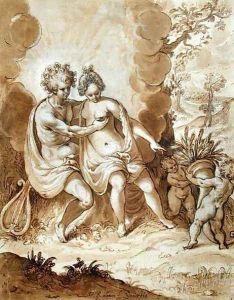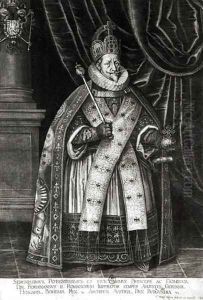Wolfgang Kilian Paintings
Wolfgang Kilian was a notable figure in the world of art, born in 1581 in Augsburg, Germany. Coming from a family with a strong artistic lineage, Kilian was primed from a young age to make his mark in the realm of engraving. His family's background, deeply embedded in the arts, provided him with the initial exposure and skills necessary to embark on his artistic journey. He was one of the many children of Bartholomäus Kilian the Elder, a painter, which positioned him within a nurturing environment for developing his artistic talents.
Kilian's career was predominantly based in Augsburg, a city that was a vibrant center for artists during the late Renaissance and early Baroque periods. This environment was crucial for his development and success as an engraver. Throughout his career, Wolfgang Kilian became known for his mastery in engraving, particularly excelling in portraits, landscapes, and religious themes. His works were not only appreciated for their technical skill but also for the way they captured the essence of his subjects with depth and sensitivity.
He took on significant projects during his lifetime, including producing illustrations for books and creating portrait engravings of important figures of his time, which helped to spread his fame beyond the borders of Augsburg. Kilian's engravings served as a vital means of disseminating the likenesses of European nobility, scholars, and politicians, thereby contributing to the cultural and historical documentation of his era.
In addition to his individual accomplishments, Wolfgang Kilian played a role in the continuation of the Kilian family legacy in the arts. He trained and influenced his nephews, Lukas Kilian and Bartholomäus Kilian the Younger, both of whom went on to become prominent artists in their own right. Through his mentorship, he ensured that the Kilian family name remained synonymous with high-quality engraving for generations.
Wolfgang Kilian passed away in 1662 in Augsburg. His contributions to the art of engraving have left a lasting legacy, securing his place in the annals of art history. Through his works, Kilian not only captured the visual culture of his time but also set a standard for excellence in engraving that influenced artists long after his death. His life and work reflect the vibrant artistic community of Augsburg in the 17th century and highlight the enduring value of engraving as a form of artistic expression.

